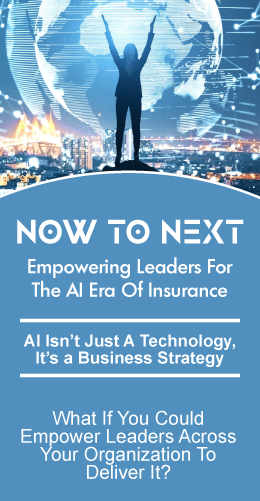The life insurance industry faces emerging risks that present challenges and opportunities as the world becomes more complex and interconnected. Insurers must adapt quickly to risks like climate change, pandemics, cybersecurity threats, social change, and economic instability. When combined with solutions that address the needs of Gen Z & Alpha, they open the door to innovation and growth. Here’s How.
Life and Benefits providers can drive innovation and growth by leveraging these risks, particularly when designing solutions for Gen Z and Alpha customers. These generations have different needs, attitudes, and expectations for insurance and benefits, requiring personalized, relevant, and technology-driven solutions.
Life Insurance in the Age of Climate Change: Navigating New Risks and Opportunities. The risks to life, health, and wellness created by climate change include extreme weather events like fires, floods, and hurricanes, which can lead to injuries, fatalities, and displacement. Heatwaves and air pollution also pose health risks like respiratory problems and heat exhaustion. Climate change can also impact food and water security, leading to malnutrition and waterborne illnesses.
Gen Z and Alpha are highly aware of the risks of climate change and their impact on their future. They demand that their products and services align with their values and lifestyles, including sustainability and environmentalism. They seek solutions that promote healthy living and social and environmental responsibility and align with their values and priorities.
Innovative life and voluntary benefits solutions that can address the needs of Gen Z and Alpha include products that incentivize environmentally-friendly behaviors, such as using public transportation or electric vehicles. Life insurance products can also provide financial protection against climate-related risks, such as flooding or wildfires. Voluntary benefits solutions can include programs that promote healthy lifestyles, mental health support, or flexible, tech-driven solutions that align with the values and lifestyles of the next generations.
By creating new life and voluntary benefits solutions that address the risks of climate change and meet the needs and expectations of Gen Z and Alpha, insurance providers can protect and support the next generations and drive innovation and growth in the industry.
Cybersecurity and Life Insurance: Protecting Customers and the Industry. Gen Z and Alpha customers are digitally sophisticated. It’s more important than ever for life insurance and benefits providers to develop digital-first solutions that protect against cyber threats. With the rise of online fraud and cyber attacks, customers need to feel secure in their digital interactions with insurers.
To protect against cyber threats, life insurance, and benefits providers should invest in and market their robust cybersecurity measures. Digital identity verification and multi-factor authentication enhance security, while cybersecurity insurance provides financial protection in case of a breach.
Education and resources for safe online practices build trust and loyalty with digitally savvy customers. Continuous monitoring and updating of cybersecurity measures demonstrate a commitment to protecting both customers and the industry’s integrity.
Social Change and Life Insurance: Addressing the Needs of the Next Generations. Gen Z and Gen Alpha generations have different attitudes and expectations towards life insurance than previous generations. Insurers need to be able to adapt to these changing attitudes and needs by creating new products and services that are more relevant and personalized to these generations. For example, insurers can create new insurance products that address emerging risks such as mental health or social inequality or leverage emerging technologies such as blockchain and AI to create more personalized and relevant products.
The Future of Emerging Risks and Life Insurance: Innovating for Growth and Resilience. The emergence of new risks and opportunities presents challenges and opportunities for the life insurance industry. To stay ahead of the curve, insurers must innovate for growth and resilience by leveraging emerging technologies, collaborating with other players in the industry, and staying agile and adaptable. For example, insurers can partner with InsurTech startups to bring new products and services to market or use blockchain and other emerging technologies to create more efficient and secure insurance products. By doing so, insurers can transform disruption into opportunity and drive innovation and growth in the industry.
Disrupting the Status Quo: Leveraging Emerging Tech to Create Next-Gen Life and Benefits Products for Gen Z and Alpha. Life and benefits carriers must invest in cutting-edge technologies and methodologies to meet Gen Z and Alpha’s unique needs and expectations. These include artificial intelligence, machine learning, big data analytics, and cloud computing.
Using these technologies, life and benefits carriers can develop personalized and relevant products that align with the values and lifestyles of these generations. For instance, AI-powered chatbots and voice assistants can offer on-demand customer service and support, while machine learning algorithms can analyze data to provide tailored recommendations and pricing.
Life and benefits carriers can use big data analytics to understand customer behavior and preferences better. Cloud computing can enable them to securely and flexibly access data and applications. Moreover, they can access new technologies and ideas through open innovation and partnerships with startups and other industry players.
By leveraging these technologies and methodologies, life and benefits carriers can create a new generation of products that appeal to and support Gen Z and Alpha while driving innovation and growth in the industry.
Balancing Risk and Reward: Strategies for Successful Innovation in Life Insurance. To balance the risks and rewards of accelerating innovation, life, and benefits carriers can implement strategies such as agile development methodologies, cross-functional collaboration, and rapid prototyping. They can also leverage data analytics and customer insights to drive informed decision-making and optimize their products for the evolving needs of Gen Z and Alpha customers.
Finally, maintaining a strong risk management framework and a customer-centric approach can help carriers mitigate risks while creating products that deliver value and meet the unique needs of the next generations.
Collaboration for Change: Building an Innovation Ecosystem in Life Insurance. Life and benefits carriers can leverage collaboration and digital ecosystem partners to better understand Gen Z and Alpha customers and identify their key lifestyle and activity touchpoints. For example, carriers can partner with wearable technology companies to collect customer health and wellness data or collaborate with social media platforms to understand customer preferences and values..
With this information, carriers can create innovative insurance products and solutions that align with these customers’ lifestyles, activities, and values. These solutions could include personalized wellness programs, flexible coverage options that align with changing life stages and events, and products that provide financial protection against risks associated with their interests and activities.
Collaboration and partnerships can help carriers stay ahead of emerging trends and evolving customer needs. By working with startups and other innovators, carriers can tap into new technologies and approaches that can help them better serve Gen Z and Alpha customers. These partnerships can also help carriers create more efficient and streamlined processes, such as digital underwriting and claims management, that align with the digital-first preferences of these generations.
By leveraging collaboration and digital ecosystem partners, carriers can better understand Gen Z and Alpha customers and create innovative insurance products and solutions that are relevant, valuable, and align with their lifestyles and values.
Embracing Innovation for a Digital-First Gen Z and Alpha Future. The life insurance industry is facing challenges and opportunities. Gen Z and Alpha require personalized, relevant, and technology-driven solutions. Insurers must leverage emerging risks to drive innovation and growth to stay ahead.
Insurers that embrace this transformation and innovate for growth and resilience will position themselves well to thrive, making it a compelling business argument for taking action now. Those who fail to do so will be left behind, losing market share and revenue
To drive successful innovation, insurers should balance the risks and rewards of accelerating innovation. Strategies such as agile development, cross-functional collaboration, and data analytics can help insurers to balance these risks and rewards effectively.
By investing in cutting-edge technologies and leveraging collaboration and digital ecosystem partners, insurers can better understand Gen Z and Alpha customers, create innovative insurance products and solutions that align with their lifestyles and values, and stay ahead of emerging trends. This approach will help insurers drive innovation and growth, succeed in the rapidly changing insurance industry, and remain viable competitors in a digital-first future.
Let’s get started.
Mike Connor, CEO, SVIA
Your thoughts and comments are appreciated.








